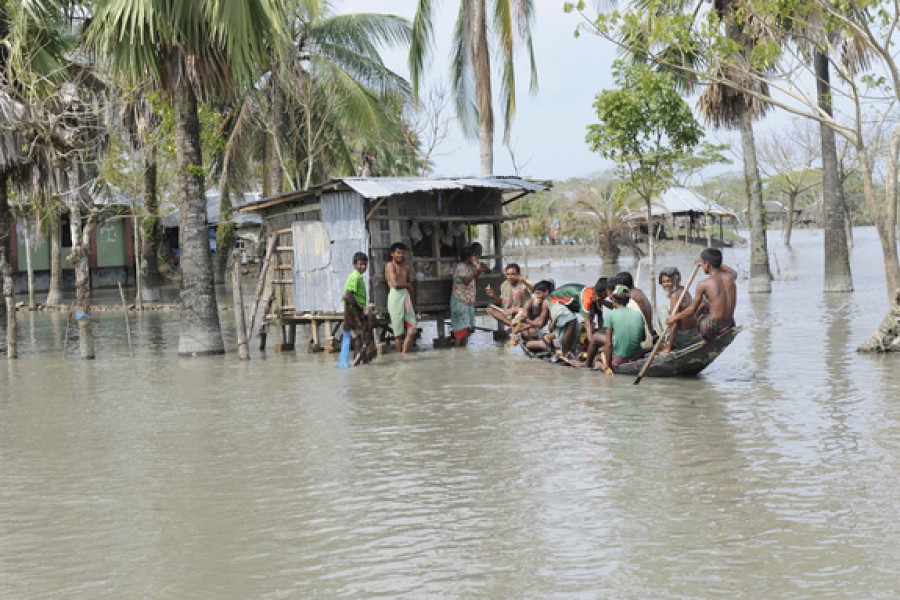We know that weather affects our health directly when it is too hot or too cold. When there are extreme weather and climate events, there is flooding or drought. Greater levels of air pollution and higher levels of pollen can affect respiratory diseases. The vector-borne diseases are changing their ranges, so mosquitoes and ticks that carry diseases and harm human health are expanding geographically with warmer temperatures.
Therefore, climate change poses a major threat to public health and it is surprising that few people understand it. Strategies that address climate change have the potential to considerably benefit human health, yet public health engagement at the intersection of climate change has been limited.
Climate information regarding climate change timescales (> 50 years) are highly uncertain and beyond the normal methods of prediction. Our ability to predict such changes in an operational context is not yet developed and may prove difficult because of the strong stochastic character of the climate. In contrast, the El Niño-Southern Oscillation's (ENSO) inter-annual time-scale variability and the effect of ENSO on vector-borne diseases, such as cholera in Bangladesh and malaria epidemics in parts of South Asia, have been well established. The ENSO and seasonal climate information would, therefore, offer the opportunity to target scarce resources for epidemic control and disaster preparedness. Knowing the ENSO conditions ahead of time would provide substantial opportunities to provide early warnings on climate extremes and related vector-borne diseases outbreaks in Bangladesh on month-to-seasonal time-scales. This is also different from health planners, who are used to dealing with vector-borne diseases from the perspective of spatial (e.g., related to space) risk concepts. The ENSO-based information provides information from the perspective of both spatial and temporal (e.g., related to time) risk concepts. This may offer most cost-effective decision options regarding vector-borne disease management in Bangladesh.
SCIENTIFIC COMMUNICATIONS BETWEEN CLIMATE AND VECTOR-BORNE DISEASES: Weather and climate conditions, as well as surface water availability that can positively or negatively influence the transmission of arthropod-borne diseases include: air and water temperature, rainfall, humidity, surface water and wind. These conditions may also manifest as extreme events in the form of El Niño and La Niña and cause drought, flooding, storms and heat/cold waves that directly and indirectly impact vector transmission dynamics. While some interactions between vector/parasite and climate are relatively simple to model (e.g., the relationship between rainfall and breeding sites), others are more complex. For example, temperature interacts in multiple, sometimes opposing, ways with different aspects of insect or pathogen biology. Despite this complexity, it is clear that, to varying degrees, climatic factors determine the geographic limitations of vector-borne diseases, seasonal occurrence, year to year variability, as well as medium and long term shifts in both geographic distribution and intensity of transmission. Understanding the spatial and temporal relationships of climate and environmental direct and indirect drivers of vector-borne disease transmission is important in order to benefit from climate information to better target current control activities or predict future challenges.
HEALTH ADAPTATION TO CLIMATE CHANGE: There's a range of areas where individuals can take action, but there are others where health systems are required to intervene. Individually, it depends a bit on what kind of health outcome we're concerned about. For example, for heat waves, early warning systems regarding heat wave save lives. Greater awareness of heat and the risk it presents to our health and greater access to information means that people can make appropriate choices. For example, when it is very hot outside, people will know they should drink sufficient fluids. They might also find a cooling centre to ensure that their core body temperature does not rise too much. Increased awareness can also extend mitigation efforts into the communities so that people notice neighbours and families that may be at higher risk. There is quite a lot that can be done.
HOW URGENT IS THE SITUATION?: The situation is very urgent. We know from the special report on warming of 1.5 degrees that the Earth has already warmed 1 degree Celsius from pre-industrial times, and that we'll see another half a degree of warming sometime in between 2030 to 2050. The additional half a degree of warming will present significant risks to our health, livelihoods and ecosystems.
Many of us didn't realise that a change in climate would affect our children, neighbours and ourselves as individuals. In fact, all populations will be affected by climate change, but some are more vulnerable than others. Therefore, a new advocacy and public health movement is urgently needed to bring climate and health disciplines together to adapt to the effects of climate change in Bangladesh.
Md Rashed Chowdhury PhD is Principal Research Scientist, Pacific ENSO Applications Climate Centre (PEAC) Joint Institute for Marine and Atmospheric Research, University of Hawaii at Manoa. [email protected]


